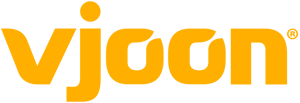
Q. Is there anything publishers can learn from the principles of agile software development?
David: It’s easy to draw comparisons between ‘Waterfall’ development methodology to typical publishing workflows. When you consider the major development practices of ‘Waterfall’ and ‘Scrum’, I think too many publishers are still looking at their workflow in a Waterfall sense – writing, editing, pagination, proofing, printing. We’ve gone far beyond this with content nowadays, where your content and your message need to be delivered in so many different media – print, mobile, websites, social, blogs, marketing materials just to name a few – that publishers would be wise to look into a more agile method of producing and distributing content. Rather than thinking of this in a linear fashion, as publishers have done for years, they should be looking at content from a holistic perspective – that content is a living, breathing thing. It can be distributed immediately via mobile, but can be massaged and curated for print, and then, with the right strategy, can be published to platforms, such as social media, where the users – your customers – can actually interact with the content.
Q: As director of research and development, what has been your approach to software development?
Jörg:
When I joined the company in 2016, vjoon had already started with agile software development processes. I continued to further expand this. As a first step, we brought our quality assurance colleagues closer to the results of the development. At that time, we developed in sprint cycles of two weeks. The quality assurance then started to test the finished developed features within the sprint and started to provide feedback immediately. Additionally, I tried to improve the self-organisation of the team. One result of this is the team’s decision to extend the sprint length to three weeks. We further developed team rules and we pay more attention to our internal communication. Another important success factor has become the so-called refinement meeting. The Product Management team presents its wishes for new features in this meeting. Combined with the technical know-how of the developers, new development plans ready for implementation result from this exchange.Q: How do you see content management systems evolving over the next five years?
David:
I think there’s going to be more focus on the “management” side of content management. Users are going to expect more of their CMS than they have in the past, and to that end, I think the role of the CMS will evolve into a platform for the content rather than just a repository. It’s already easy for a system to provide text index searches, but adding AI into the mix to help identify the tenor of content – whether it’s news, opinion or features – will help provide the consumers with an actual “feeling” of the content. Same goes for graphics and images; the more we can identify the author and creator’s objective with the content, the easier it will be to serve up the appropriate content to the user / consumer.Q: What are the advantages of working with the ‘Scrum’ framework?
Jörg:
‘Scrum’ defines an action framework of best-practice activities, (eg. the already mentioned refinement meeting, a daily StandUp meeting for coordination and some other meeting formats). They serve to intensify the exchange of information between the team members. The Scrum team includes all participants. Among them are developers, quality assurance employees, product owners as well as localisation and documentation employees who create the manuals.Since the know-how of all team members is used, the result will certainly be improved quality. Besides, the direct and prompt cooperation and coordination with employees from other departments has brought positive effects and minimised friction losses. Compared to classical methods, another huge advantage is the joint awareness for upcoming development tasks.
Q: What publishing trends are you, as a software developer, watching closely?
David:
Of course, you could talk about the trend of applications moving to SaaS and cloud models, but I think of how quickly the landscape is changing for publishers. It used to be that publishers competed with other publishers, now they’re competing with everyone – literally. The velocity of content creation, and the way users consume that content, are changing drastically from year to year. People can now create blogs, websites, and YouTube channels with incredible ease, and practically no start-up costs. Today’s publisher needs to be able to compete with this model and push their content out quickly, and monetise that content. We’re seeing a lot of consolidation of traditional print brands, and I think publishers are still struggling to find the right combination of channel distribution in print, web, and mobile devices. That’s why I think a good publishing platform is so important for a publisher. Software suppliers like vjoon have already figured out the agnostic content model. To us, it doesn’t really matter what your first media channel target is, we’re prepared to help you get there and re-use that content for every other channel. That affords the publisher more time to focus on what matters – building their brand.Q: What team roles does agile software development involve, how do they have to cooperate and what do you think are the key roles?
Jörg:
First of all, everyone in the team counts. I think that key roles should be avoided. For sure, the Product Owner and the Scrum Master are important roles within the process.But, furthermore, there are developers, testers – the aforementioned quality assurance staff – as well as stakeholders such as management or business development and – most importantly – the customer and end user of our product. According to Scrum, employees of other departments involved are developers, too – because they work directly on the product.
Q: Unforeseen market changes mean that companies have to rethink and adapt their development methods on a regular basis. How do you see the future of software development?
Jörg:
Before Scrum, extreme programming (XP) was very popular and many good practices from XP, such as pair programming, are used in Scrum. In the agile manifesto from 2001, which represents the basis of agile procedures, nothing was said about the qualification of participants. The “Manifesto of Software Craftmanship” has been used since 2009. In addition, many impulses come from “Lean Management” and “Management 3.0”. “Clean Code” also comes to mind. I expect that new process models will emerge as a mixture of many of these models. These emerging processes will impact on future development plans, and we will have to take into consideration and evaluate.
About us
vjoon, founded in 1990, is a leading software company within the digital content management business. With vjoon K4 we offer publishers and content marketers an ideal solution for managing content of any kind and for preparing and distributing it through a variety of media channels. More than 500 global customers like Condé Nast, BASF, Hubert Burda Media, Newsweek, The New York Times or Red Bull Media House use vjoon K4 to produce magazines, financial reports, product information, and much more in print and digital.










